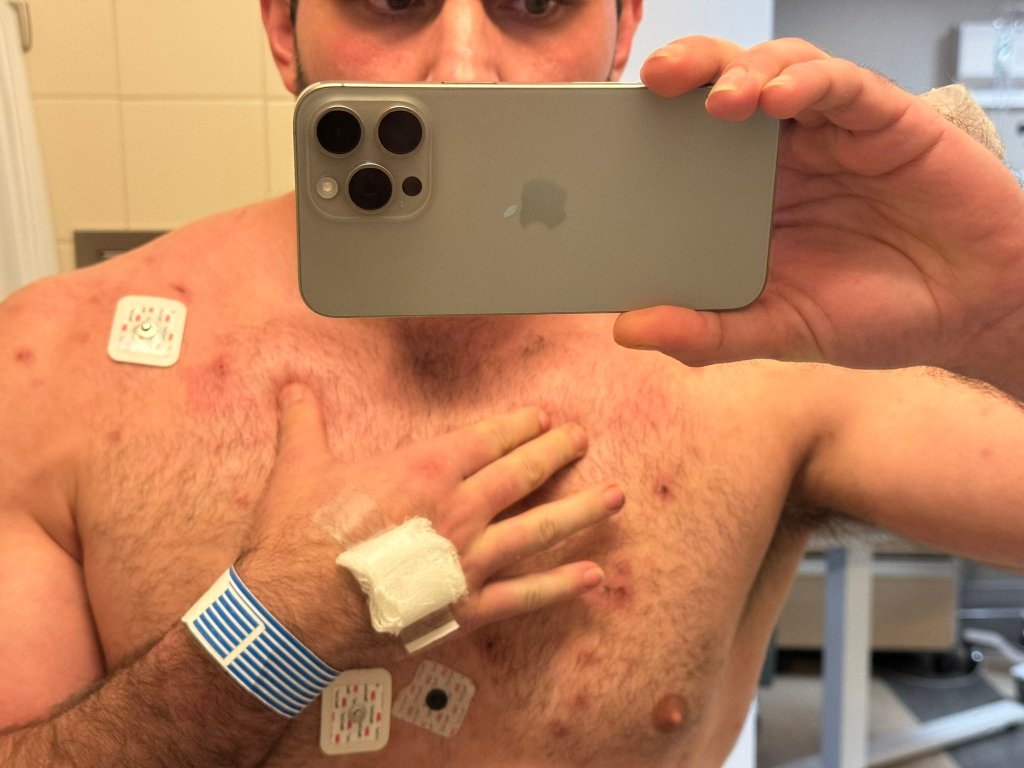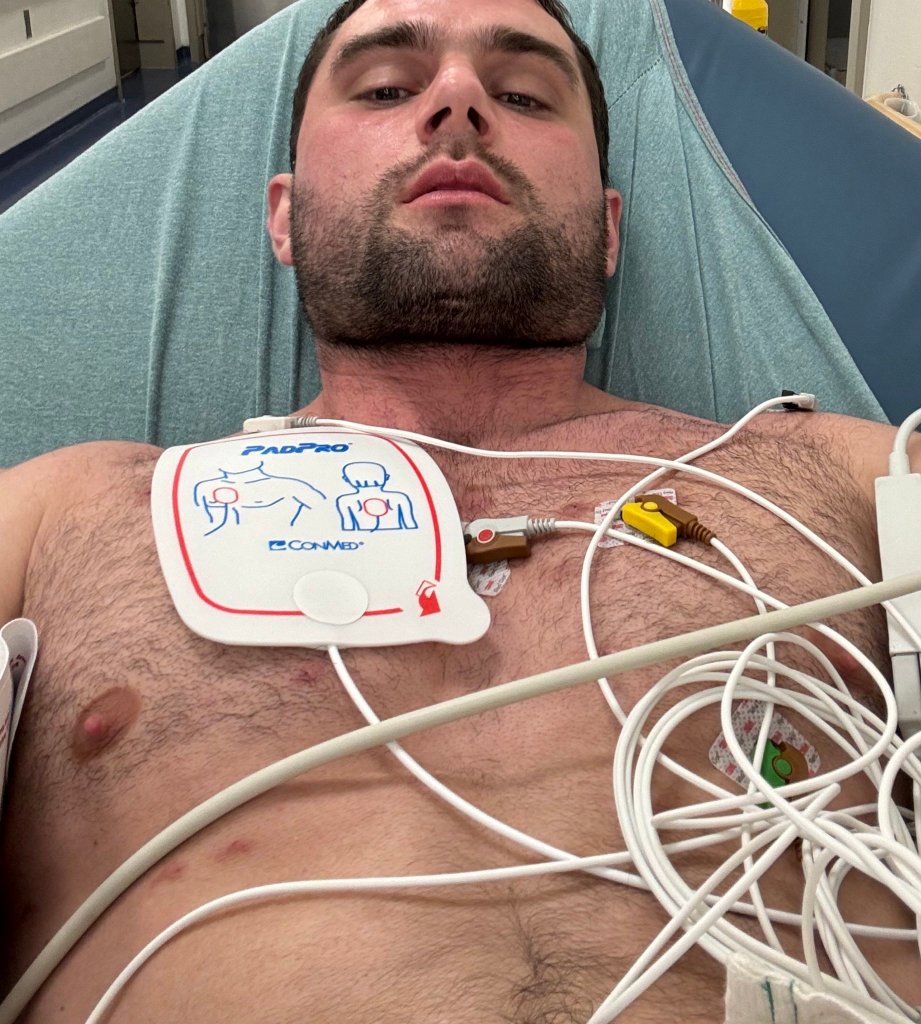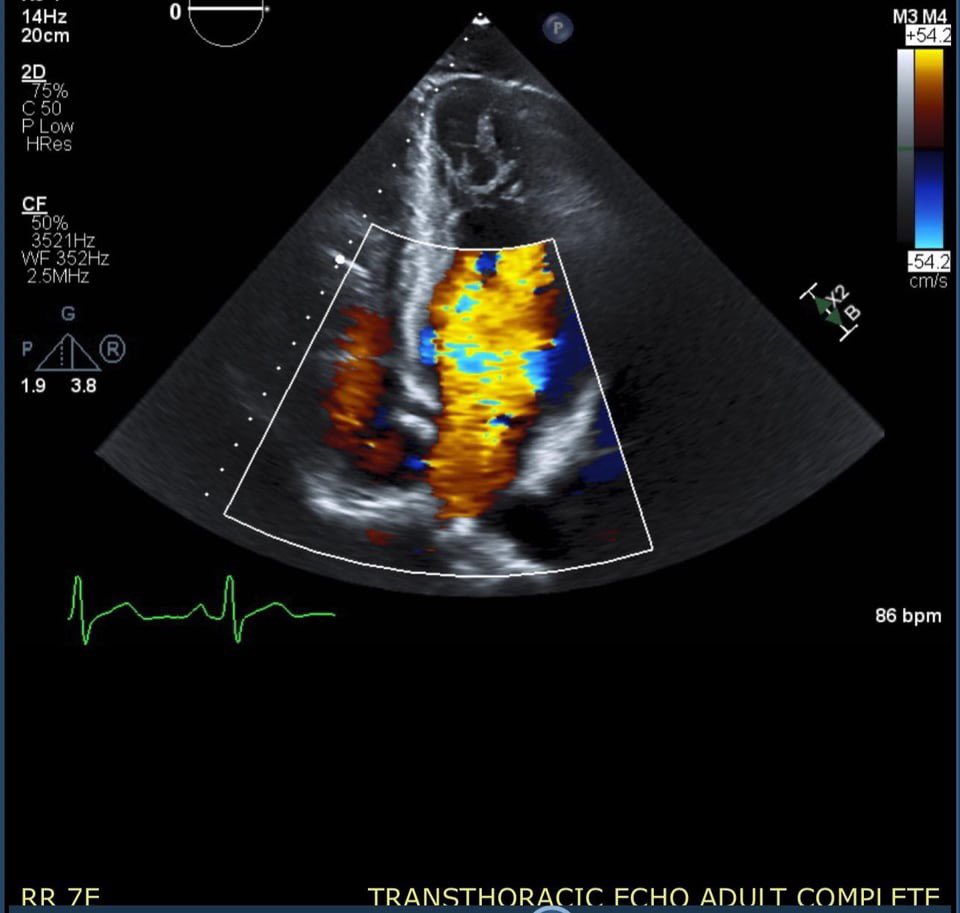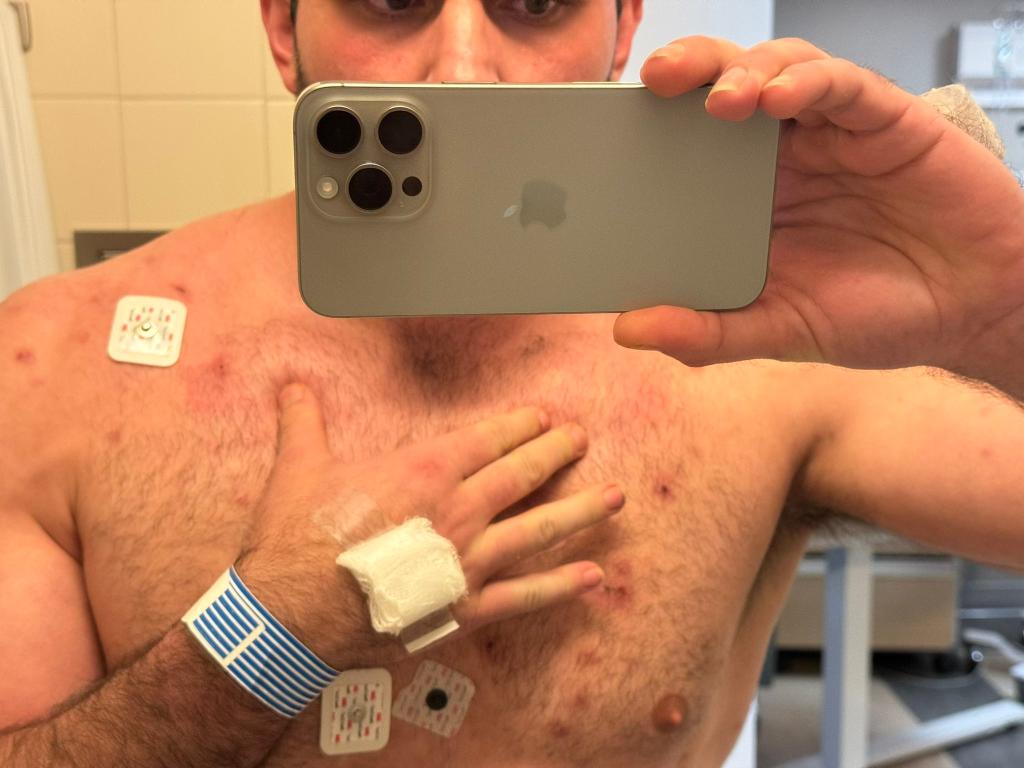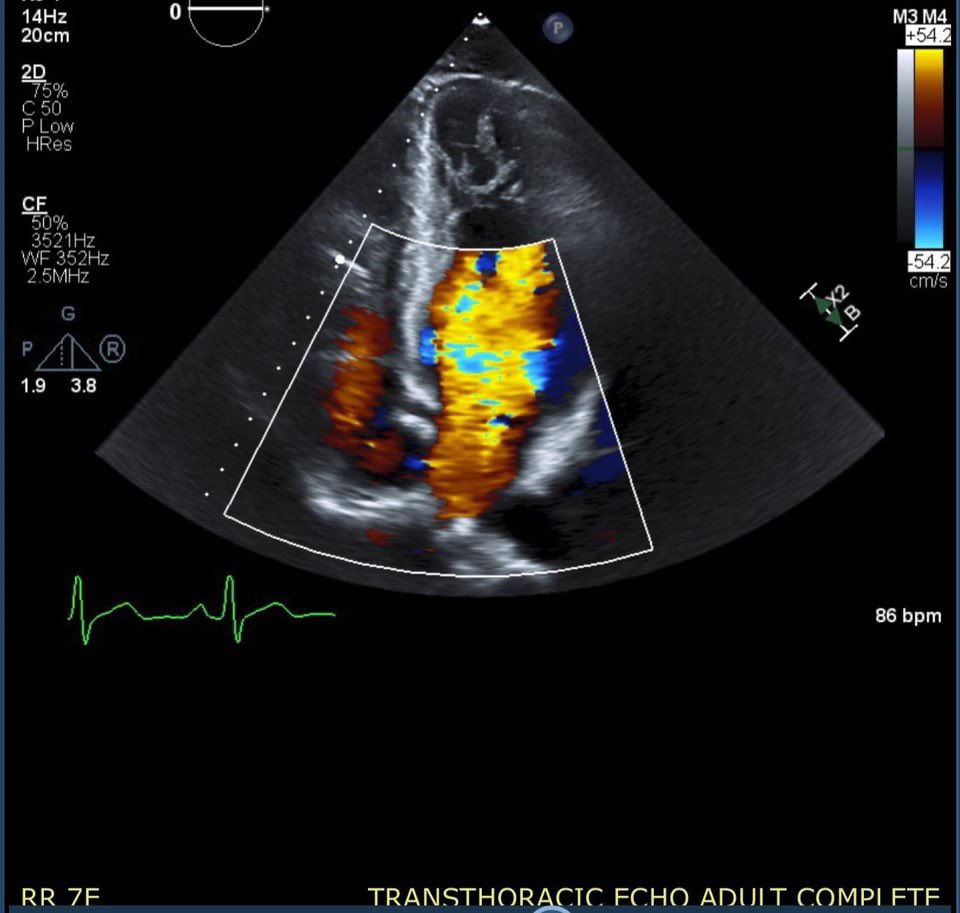Doctors told me I had anxiety and sent me home early — I had a deadly condition
A fit 28-year-old California man nearly died due to cardiac arrest after doctors mistook his sepsis for anxiety and sent him home.
“Being misdiagnosed @UCLA hospital almost cost me my life at 28,” Joe DuPont claimed in an X post describing his nearly-fatal ordeal.
The saga began in late April after the Californian, who works for the clinical lab industry, noticed red splotches riddling his neck chest, and other body parts. Dupont, who leads an active lifestyle, initially dismissed them as harmless skin rashes.
However, the blotches reportedly started oozing, which caused DuPont to grow concerned, the Daily Mail reported.
“When I realized that it just wasn’t going away, that’s when I went to the hospital,” said the Golden State resident, who reportedly went to the Ronald Reagan UCLA Medical Center in Los Angeles.
By that point, the left side of his neck had filled with pus and had opened up even more, as seen in gruesome accompanying photos posted to his X page.
Despite the alarming symptoms, he claimed doctors chalked up the rash to a skin infection and anxiety, and sent him home after prescribing antibiotics and steroids. The patient told doctors he’d been feeling a bit anxious lately but hadn’t expected them to include it in his official diagnosis.
DuPont said he was actually on the verge of sepsis, an extreme response to an infection in which the immune system attacks the body, potentially causing organ failure and even death. As of yet, it’s unclear what caused his reaction.
Shortly after getting sent home, DuPont said his leg started shaking and spasming — which he initially interpreted as a sign his body was “healing.”
However, the fitness buff realized that was not the case after waking up the next morning in “much worse shape.”
“When I stood up, I felt fluid rush to my legs, like fluid was literally collecting in my sandals,” recounted the petrified patient, who decided to return to the emergency room.
During the commute, DuPont’s condition deteriorated rapidly.
His heart started pounding, he felt intense chest pain, and he began losing his vision, as well as feeling as if fluid was spreading throughout his body. By the time he arrived, the poor soul felt so weak that he could hardly walk to the triage area.
A subsequent EKG revealed that he had an erratic heartbeat, and that fluid was amassing around his heart, as seen in alarming photos on X.
That’s when DuPont suffered a severe cardiac attack, which caused his heart rate to skyrocket and then plunge down to the 30s — less than half the amount of a normal resting heart rate.
Further tests revealed that the patient had suffered from endocarditits, inflammation of the inner lining surrounding the heart’s chambers and valves, which occurs when an infection travels through the bloodstream and attaches to the heart.
This can, over time, cause heart failure, as was the case with DuPont.
While DuPont is still having some residual heart issues — the doctors are currently working to make sure his ticker is healthy long-term — the patient said he’s lucky to be alive.
“I am incredibly fortunate to come out of this the way I did,” gushed DuPont, who’s now using his case as a cautionary tale against the perils of misdiagnosis.
“Misdiagnosis can be lethal,” he warned in an X post. “Sharing so this doesn’t happen to others the same way. The doctors didn’t follow protocol at all. Big issues.”
Sepsis currently claims nearly 300,000 lives each year in the US and is one of the leading causes death of at hospitals.
It’s also one of the main reasons why patients are readmitted to medical facilities, as was the case with DuPont.








